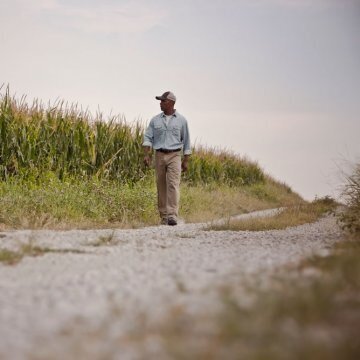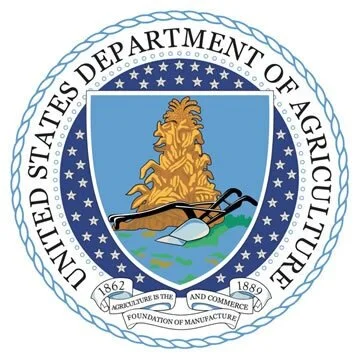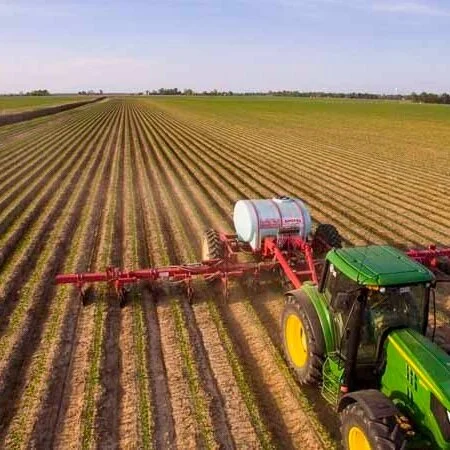Soy checkoff research funding and partnership with the Goodyear Tire and Rubber Company has led to a long range commitment by Goodyear to phase out petroleum derived oils from its products by 2040 and use US soybean oil instead. United Soybean Board member Ed Lqmmers from Nebraska says it was all due to the soybean checkoff from Louisiana and other soy producing states
Read MoreNew row crop varieties — soybeans, wheat, rice, corn, cotton, grain sorghum, sweet potatoes and sugarcane — are released annually by private companies and university breeding programs. Each variety can vary dramatically in yield potential, agronomic traits such as maturity, and resistance to insects, diseases and environmental stress factors. It is important to note a variety with high yield potential at one location may not be competitive in another location because of a lack of adaptability to different environments, including weather patterns, soil characteristics, disease pressure and cropping systems. Furthermore, a variety achieving a high yield or quality one year may not perform as well the next year at the same location because of yearly changes in the environment, such as rainfall or disease patterns.
Read MoreA drier-than-usual year up north has Baton Rouge-area farmers and communities along the Mississippi River breathing a sigh of relief as the threat of flooding due to high water levels may not be a significant headache this year.
The river in Baton Rouge appears to have crested last week at about 38 feet, just over what’s considered a moderate flood stage. The National Weather Service projects waters will gradually continue to fall and could even reach minor flood stages by early next week, even with this week's rains.
Read MoreBy a wide margin, soybeans are the most valuable U.S. farm export, accounting for 18¢ of every $1 in sales during calendar 2020, said the USDA’s Foreign Agricultural Service on Wednesday. Corn, the country’s most widely grown crop, was second in export value to soybeans, which were worth a record $25.7 billion compared with $9.2 billion for corn.
Read MoreUSDA on Friday lowered corn ending stocks for the 2020-21 by 150 million bushels (mb) to 1.352 billion bushels (bb) but held pat with soybean ending stocks at 120 mb.
USDA raised corn use for feed, seed and industrial use, as well as exports to drop the ending stocks for the crop.
Read MoreBrazilian farmers are a bit slower this year at advancing grain sales for new crop. Overall Brazil has sold about 15% of its 2021/2022 crop versus 25% last year at this time. Why?
First, anybody that has sold anything in the last 12 months probably regretted it as prices have continued to steadily climb higher. They have been rewarded for being patient. Second, as profit margins have improved, so have farmers’ cash reserves. This allows them to pay cash for more of their inputs rather than doing a soybean trade, which means locking a portion of their crop at harvest at much higher interest rates.
Read MoreEveryone deserves the opportunity to enjoy good health.
Access to nutritious food is foundational for people to realize that opportunity.
These are simple universal truths. They are also urgent calls to action.
The 2020 Global Nutrition Report shows one in nine people across the globe is undernourished. One in three is overweight or obese. Almost one in four children under the age of 5 faces stunted growth from malnutrition. In short, too many people lack access to nutritious food, and health is suffering as a result.
Read MoreThe soybean planting season in Louisiana has had a slow start in 2021 due to weather conditions. The USDA-NASS report on March 28 indicated there were no soybean acres planted, where normally 2% of the soybean crop would have been planted. The ice storm in mid-February slowed down field preparation and weekly rains kept fields too wet to plant.
Read MoreAny change in capital gains tax policy that eliminates or scales back stepped-up basis could result in a massive tax burden on the agricultural sector according to new analysis by the American Soybean Association and the American Farm Bureau Federation.
To minimize the impact of burdensome capital gains taxes, farmers and ranchers use stepped-up basis, which provides a reset for the asset value basis during intergenerational transfers. The magnitude of the tax burden that would be felt if basis is taken away or reduced would likely significantly exceed the annual income generated by the assets, something that has soy and other American farmers concerned.
Read MoreLouisiana Prospective Plantings Report, March, 2021
Read MoreSoybean farmers are cautiously optimistic about this year’s crop, thanks to steadily increasing prices and a worldwide increase in demand that is triggering more activity at export facilities.
Read MoreThe U.S. Department of Agriculture’s Commodity Credit Corporation (CCC) today announced the 2021 Marketing Assistance Loan rates.
Marketing Assistance Loans provide interim financing to producers so that commodities can be stored after harvest when market prices are typically low and sold later when market conditions may be more favorable. The 2018 Farm Bill extended the Marketing Assistance Loan program, making production for the 2019 through 2023 crops eligible for loan benefits.
Read MoreTo understand the weather challenges of growing crops in the Blacklands of North Carolina, the story of both a hurricane and tornado that did in the grain facility of Green Valley Farms near Columbia in Tyrell County fits the bill perfectly.
Read MoreOne of the most important decisions producers must make when planting soybeans in Louisiana is planting date. Soybeans have the utility to be planted in early March to late June. This wide variation in planting dates potentially exposes seedling soybeans to a multitude of insect pests that affect both above and below ground plant structures.
Read MoreAs the acreage battle continues to play out, a Pro Farmer member survey shows better commodity prices are attracting more acres this year.
The Pro Farmer/Doane survey revealed farmers plan to plant more acres, with total area planted to crops in the U.S. expected to rise to 319.4 million acres. That would be up nearly 3%, or 8.9 million acres, from 2020. If the survey findings hold true, it also means U.S. acreage will hit the highest level since 2018.
Read More













